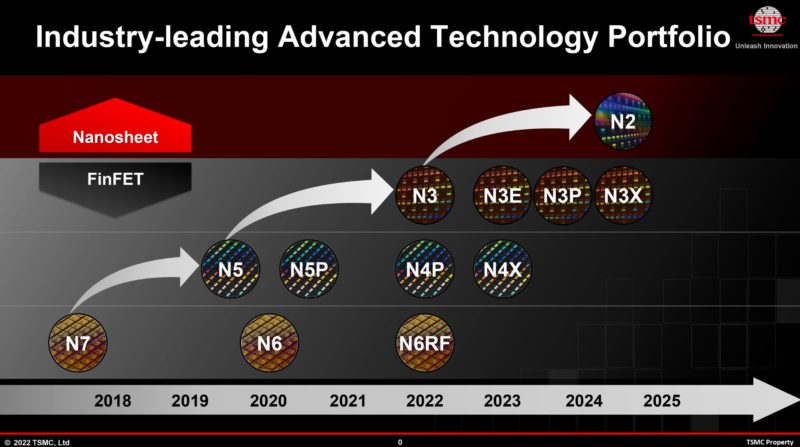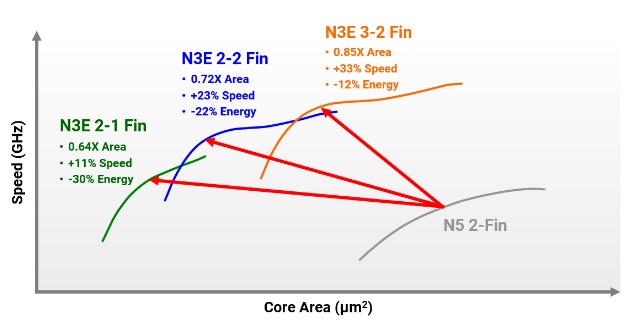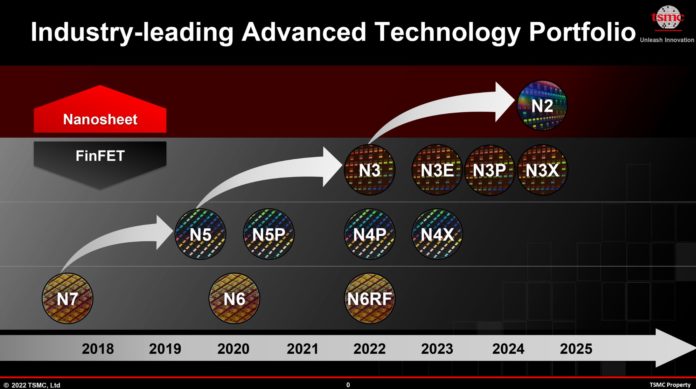This week, TSMC shared its roadmap for new process nodes. This includes a family of 3nm technologies and then the move to 2nm. TSMC’s roadmap is important to the industry since it effectively gates new chip development, and when new generations of chips can come out.
TSMC Charts Path to N3 then N2
Today, we see a healthy mix of N7 and N5 parts on the market ranging from AMD Milan-X to the Apple M1 Ultra. As we move into 2023, we expect to see N3 start to ramp up per TSMC’s roadmap.

TSMC N3 is going to continue as a FinFET generation. As you can see from the roadmap, there are a number of variations. Some of the variations will be:
- 3-2 FIN – Performance version for higher clock frequencies
- 2-2 FIN – Balance between performance, density, and energy efficiency
- 2-1 FIN – Optimized for lower power and density
Here is the chart that TSMC shared on the three process variations:

In a world where using hybrid core and chiplet designs is normal, having the ability to utilize different processes to optimize performance, power consumption, and density is important. N3 is designed to be a long-lasting process node much like N5 and N7 are. As a result, we see more flexibility for chip designers here.
N2 is going to be the next major technology change with Nanosheet in the 2024-2025 timeframe.
Final Words
We are not going to go too deep into this announcement since we normally focus on the products that come out rather than the fabrication side. Still, it is great to see that TSMC’s roadmap is healthy. The new 3nm generation will bring server CPUs reaching into hundreds of cores per socket so it is fair to say that the next generation of chiplets along with advanced packaging technologies will have a big impact on the server industry.




